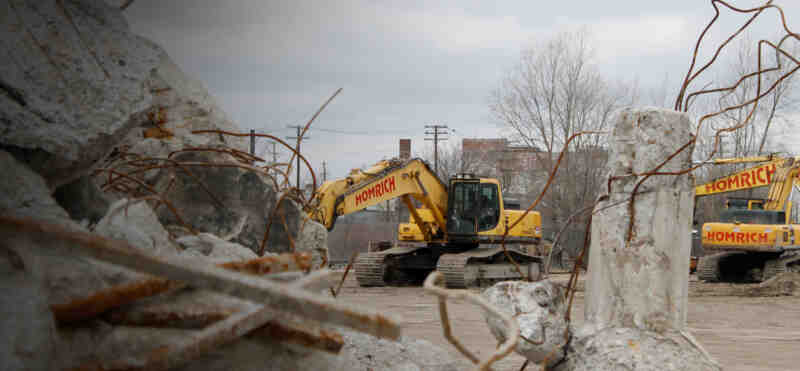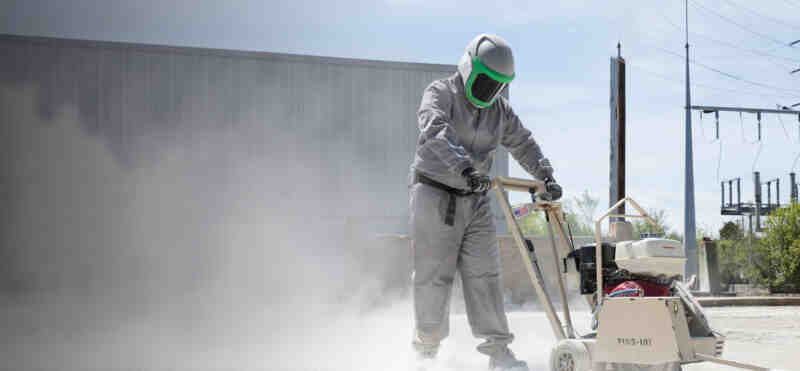
Construction workers are 20 times more likely to die of exposure to a harmful airborne substance, than from a workplace accident.
Back to Articles & Resources View all Workplace Hazards content
A range of materials are used to make buildings and they are selected for varying reasons, from price and availability to strength and pliability. Some of the most common materials used in the construction industry are steel, timber, plasterboard, concrete and brick. As a finished product, these are safe to be handled and do not pose any immediate health risks. However, when materials such as concrete and brick are cut, crushed and grinded, or buildings are demolished, then these can create dust which can become respirable. As these material's particulates enter the respiratory system, this is where a range of health effects can begin to affect operators' both short and long-term health. Sadly, construction workers are 20 times more likely to die of exposure to harmful airborne substances than from a workplace accident.
The Effects of Dust Exposure
Construction dust is a general term used to describe any number of dusts that are found on construction and demolition sites. This generally comprises of silica, timber, and lower toxicity dusts. The ones that we should have the most concern of exposure to are silica dusts.
Silica causes permanent damage to the lungs as it enters the respiratory system. As the lungs react to the silica particles, these develop fibrotic nodules and scarring around the trapped particles. When the nodules grow larger, this causes breathing to become difficult which can lead to occupational asthma, Chronic Obstructive Pulmonary Disease (COPD), silicosis and even lung cancer. The intensity and duration of exposure determines how fast the silica will start to affect the person’s health.
These respiratory illnesses present the following symptoms:
- Lung inflammation
- Fluid buildup in the lungs
- Fever
- Sharp chest pains
- Shortness of breath
- Wheezing
- Coughing
For those that suffer from silicosis, some very serious treatment options are required such as medication, dramatic lifestyle changes, breathing assistance, and even lung transplants. For those that get diagnosed too late, silicosis can be fatal.
Reducing the Dust Exposure
Some common methods used to prevent the spread of demolition dust are surface wetting and airborne capture, and when concrete cutting, dust extraction systems are used. All these methods aim to reduce the spread of silica dust as it becomes airborne. However, they do not guarantee the prevention of dust spread as it can become dry and then airborne again or fail to be contained within the extraction zones. Because of this, other methods such as respirators should be used in conjunction to protect operator health and safety.
Respirators are considered a reliable last line of defense when it comes to controlling respiratory hazards. Silica dust can range from 0.1 - 100 microns in size, therefore selecting a respirator with a filter that removes particulates down to that size gives operators confidence that the air they’re breathing is always safe.
One such respirator is the Z-Link, which removes particulates and is comfortable to wear. When compared to a tight-fitting respirator, Jim King from Homrich Wrecking in Michigan said, ‘With the Z-Link you have supplied air, you're not labored to pull your air through a filter. It’s all the difference in the world’.
As communities expand, more and more construction workers are going to suffer from the effects of silica exposure in the future. Implementing respiratory protection capable of performing in these conditions is one of the simplest and most effective ways to ensure that these workers get to enjoy a long and healthy life.
Related Content

Case Study: Homrich Wrecking Inc.
Michigan based demolition company, Homrich, uses the Z-Link respirator to protect their workers from the risk of silica exposure.
Watch case study
Resources: The Dangers of Respirable Silica
Click through to access additional resources about the hazards of respirable silica.
Learn more